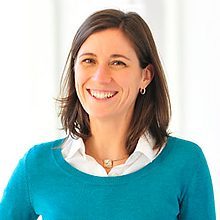I am interested in how to create technologies that adapt to accommodate individual user needs and preferences, whether to improve basic interactions such as touchscreen text entry or more complex tasks such as working with machine learning models. My research goal is to ensure that the next generation of computing technologies are designed to meet the needs of the broadest range of users.
Affiliations
Associate Professor, Human Centered Design & Engineering
Adjunct Associate Professor, Allen School of Computer Science & Engineering
Director, Inclusive Design Lab
Research highlights
Expanding voice-based interaction
Over the past few years, conversational voice assistants (VAs) such as Amazon Alexa and Google Assistant have become ubiquitous. We have shown that VAs offer tremendous potential to support equal access to information, particularly for blind and low vision users: they are inherently accessible regardless of vision level and, as novice tools, they offer an approachable introduction to audio-based interaction for people unfamiliar with screen readers. However, VAs currently support only a limited set of tasks. In collaboration with researchers at Microsoft, we are investigating how to combine the strengths of screen readers–powerful expert tools–with the approachability of VA interaction. An example is our VERSE web search tool.
Real-time captioning and sound awareness support
With advances in wearable computing and machine learning, Jon Froehlich and I have been investigating new opportunities for real-time captioning and sound awareness support for people who are deaf/Deaf and hard of hearing (DHH). Our work spans three primary areas: real-time captioning in augmented reality and wearables (ARCaptions), sound awareness support in the “smart home” (HomeSound), and real-time sound identification on smart watches (SoundWatch, website forthcoming). Throughout this work, we’ve engaged with over 250 DHH participants to help identify design opportunities, pain points, and to solicit feedback on our designs.
Related news
- CREATE Ph.D. Student Emma McDonnell Wins Dennis Lang Award
- Findlater and co-authors receive 2020 Best Paper award for study of Voice Assistants by Older Adults
- CREATE faculty and students awarded at ASSETS 2020
- SoundWatch smartwatch app alerts d/Deaf and hard-of-hearing users to sounds
- UW CREATE leadership at ASSETS 2020

